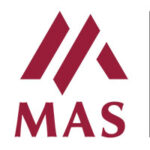The integration of technology in the classroom is transforming the way students learn and how educators teach. In this blog, we will discuss the importance of technology in education, the latest trends in education technology, challenges faced by schools in implementing new technology, and strategies for educators to leverage technology to enhance student learning and engagement.
The Importance of Technology in Education:
Technology has revolutionized education by providing students with access to a wealth of information and interactive learning opportunities. With technology, students can learn at their own pace and receive personalized feedback, helping them to master difficult concepts more easily. Technology also enables educators to create engaging, interactive, and multimedia-rich content that can improve student engagement and retention.
Technology has revolutionized the field of education in numerous ways, providing students and educators with access to innovative tools and resources that can enhance the learning experience. From online learning platforms to interactive multimedia content, technology has transformed the traditional classroom and enabled students to learn in new and exciting ways.
Access to Information
Technology has made it easier for students to access a wealth of information on any topic imaginable. With the internet, students can research and learn about any subject, from the basics of math and science to more complex topics like history and philosophy. Online libraries, e-books, and academic journals provide students with a vast array of resources that can aid in their studies, helping them to develop a deeper understanding of the material.
Personalized Learning
Technology has also enabled personalized learning, allowing students to learn at their own pace and receive feedback tailored to their individual needs. Online learning platforms offer personalized learning experiences that can adapt to the student’s level of knowledge and learning style. This means that students can focus on the areas that they struggle with, receiving extra help and guidance until they master the concept. With personalized learning, students can progress through the material at their own pace, avoiding the frustration of falling behind or feeling overwhelmed.
Engaging and Interactive Content
Technology has enabled educators to create engaging, interactive, and multimedia-rich content that can improve student engagement and retention. Interactive videos, animations, and simulations can help students visualize complex concepts and make learning more enjoyable. Games and quizzes can also be used to reinforce learning and test the student’s knowledge. By incorporating technology into the classroom, educators can create a dynamic and interactive learning environment that encourages student participation and fosters a love of learning.
Remote Learning
In recent years, technology has become an essential tool for remote learning, allowing students to continue their studies from anywhere in the world. Online classrooms, video conferencing, and digital collaboration tools have made it possible for students to attend lectures, participate in discussions, and complete assignments from the comfort of their own homes. Remote learning has also made education more accessible to students who may not have had the opportunity to attend traditional schools due to location or financial constraints.
Latest Trends in Education Technology:
The latest trends in education technology include virtual and augmented reality, gamification, adaptive learning, and artificial intelligence. These technologies are transforming the way students learn, providing them with immersive and interactive experiences that make learning fun and engaging.
Challenges Faced by Schools in Implementing New Technology:
Despite the benefits of the Importance of Technology in Education, many schools face challenges when it comes to implementing new technology. These challenges include lack of funding, limited access to technology, lack of training for educators, and concerns about privacy and security.
Strategies for Educators to Leverage Technology in Education:
Here are the strategies for educators to leverage technology in education:
- Have a clear understanding of educational goals and student needs.
- Identify and prioritize the technology tools and resources that align with the objectives.
- Integrate technology into existing teaching methods to complement and enhance them.
- Invest in training for educators and students to ensure everyone is comfortable and proficient in using the technology.
- Encourage collaboration and communication among students through technology.
- Personalize learning experiences for students using adaptive technology.
- Use technology to provide real-time feedback and assessment for students.
- Create multimedia-rich content to engage students.
- Promote digital literacy and responsible use of technology among students.
- Stay up to date with the latest technology trends and advancements in education.
Manthena American School Teaching Methodology:
At Manthena American School, we believe in leveraging the Importance of Technology in Education to enhance student learning and engagement. Our American teaching methodology integrates technology with traditional teaching methods to provide students with a comprehensive and personalized education. Our teachers are trained to use the latest education technology to create engaging and interactive learning experiences that cater to the unique needs of each student.
Conclusion:
Technology is changing the face of education, providing students with access to information and interactive learning opportunities that were once impossible. However, schools must overcome the challenges of implementing new technology to effectively leverage it for the benefit of their students. By adopting strategies to integrate technology into existing teaching methods and investing in training, educators can effectively prepare students for success in a rapidly changing world.







